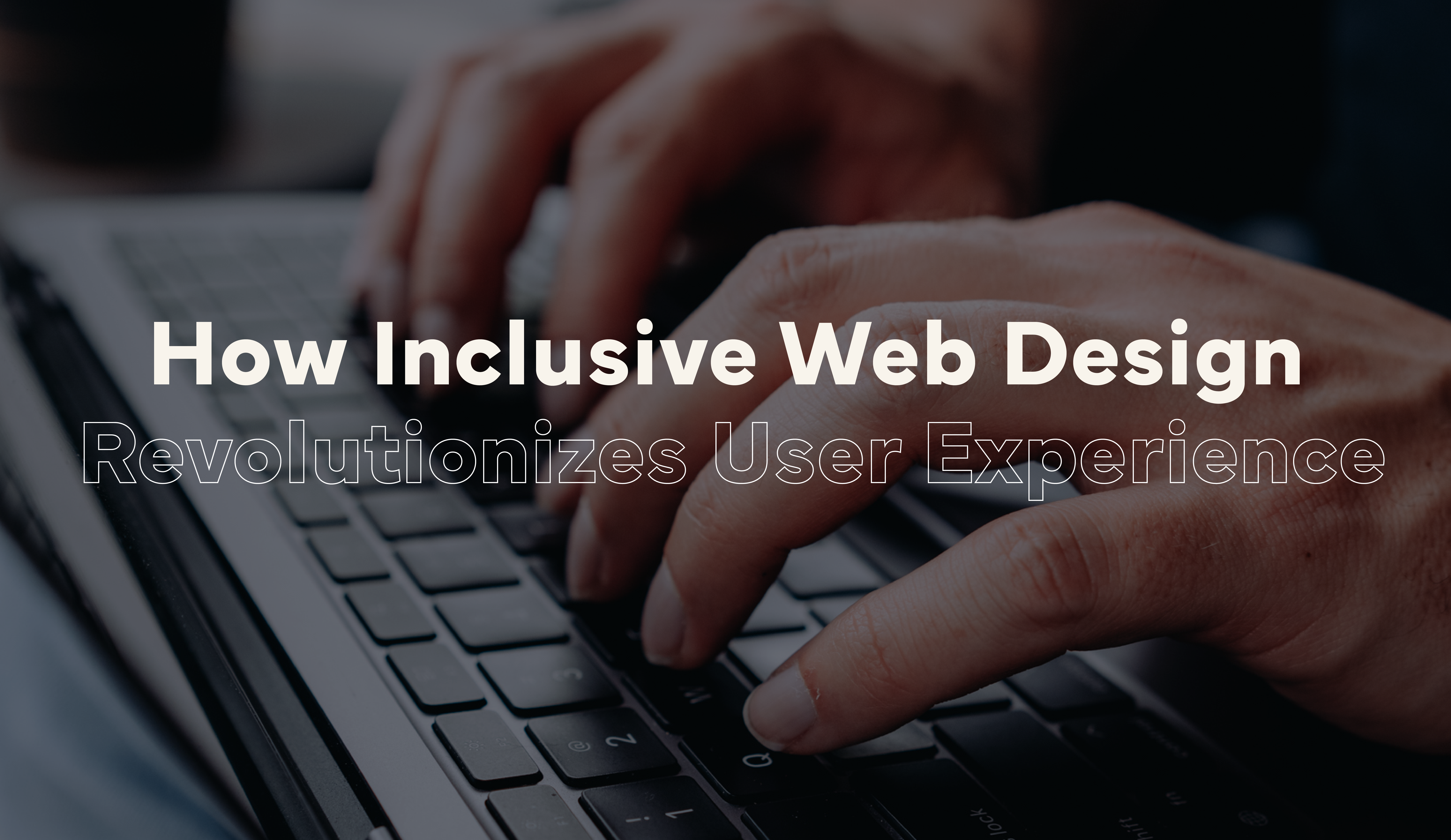BLOG How Inclusive Web Design Revolutionizes User Experience
How Inclusive Web Design Revolutionizes User Experience
POSTED BY Primitive | Jul 9, 2024

Harness the Synergy of SEO and Social Media
In today's rapidly expanding digital world, ensuring that websites are accessible to all users, including those with disabilities, is not just a courtesy—it's a crucial part of web design. This approach can drastically improve user experience and broaden market reach.
This means going beyond the best practices we learned 10+ years ago. Today, web designers are innovating in ways that greatly enrich the overall web experience and broaden the market beyond those without disabilities.
Inclusive web design presents an exciting new frontier for digital innovation.
The Importance of Inclusive Web Design
Inclusive web design is about creating digital environments everyone can access, regardless of physical or cognitive abilities. It involves developing a meaningful understanding of different people’s experiences and designing websites and services that accommodate them. Inclusive design is good for everyone, not just for those with disabilities.
Principles of Inclusive Design
The core principles of inclusive design—perceptibility, operability, simplicity, and robustness—serve as the foundation for creating more accessible websites. Implementing these standards builds in best practices that make sites usable and functional to anyone using them, not just people with disabilities.
- Perceptibility ensures that information is presented in ways that all users can perceive; this includes assistive technologies and other modalities, such as text-to-voice screen readers, as well as cognitive disabilities or personal preferences.
- Operability means that websites are navigable and usable for people with various physical abilities, incorporating features like keyboard navigability and sufficient time to read and use content.
- Simplicity focuses on clear and intuitive navigation and design, ensuring that information is easy to understand and user interfaces are straightforward.
- Robustness relates to compatibility with current and future user tools, ensuring that websites function well on all platforms and devices.
4 Misconceptions About Inclusive Web Design
While you may recognize the value of inclusive web design, it’s possible that you still have some confusion about this process and why it’s becoming the standard practice. Below, we’re calling out four common misconceptions and explaining how designing for a wider audience can often result in solutions that benefit us all.
Misconception #1: Inclusive Design Limits Creativity
Reality: Rather than stifling creativity, inclusive design often drives innovation. Designing for accessibility can lead to the development of new technologies and creative solutions that benefit all users.
For example, closed captions, which were created for the needs of the deaf and hard of hearing, are now widely used across society when audio is impractical or inconvinient.
Misconception #2: Inclusive Design is Only for People with Disabilities
Reality: While inclusive design primarily aims to make digital content accessible to people with disabilities, the benefits extend to all users. Features like clear navigation and readable fonts improve the user experience universally. The principles of inclusive design, such as simplicity and perceptibility, enhance usability for everyone, including older adults, non-native language speakers, and even users with temporary impairments (like a broken arm).
Misconception #3: Inclusive Design is Costly
Reality: Some believe that making a website accessible can be expensive. However, incorporating accessibility from the beginning of the design process can actually be more cost-effective than retrofitting an existing site.
Moreover, accessible websites can reach a wider audience, improve search engine optimization, and reduce legal risks… all of which can lead to greater financial outcomes over time.
Misconception #4: Accessibility is Just About Compliance
Reality: While meeting legal standards is a significant driver for accessibility, the benefits of inclusive design go beyond compliance. Accessible design not only benefits disabled users but effectively and seamlessly improves the UX for all users.
W3C Web Accessibility Initiative (WAI) says, “Businesses that integrate accessibility are more likely to be innovative, inclusive enterprises that reach more people with positive brand messaging that meets emerging global legal requirements.”
Real-World Case Studies
Real-world examples of inclusive web design clearly demonstrate its significant impact on user satisfaction and business outcomes.
For instance, the BBC has made considerable strides in improving accessibility across its digital platforms. This initiative not only enhanced the user experience for individuals with disabilities but also increased overall engagement across its services. By developing resources like 'Disability Passports' to support staff with disabilities and ensure that their needs are met across different projects, the BBC was able to improve on providing a more inclusive work environment.
Another compelling case is Barclays, which has implemented a company-wide accessibility strategy. This approach not only helped Barclays cater to the diverse needs of its customers and employees but also significantly bolstered its brand image and customer loyalty.
By embedding accessibility into its digital services, Barclays has demonstrated how inclusive design can lead to better business outcomes and enhanced customer satisfaction.
These examples underscore the benefits of inclusive web design in driving innovation, expanding market reach, and improving user engagement and business performance. Today, more and more business leaders are understanding the value of UX in improving audience satisfaction.
Ready to break down the barriers in your digital spaces? Get in touch with our team to learn more about building a website that meets the growing needs of your audience.
SHARE THIS POST:

About the writer, Primitive
The team behind On the Dot. is made up of creatives, strategists, and developers who give a damn. At Primitive, we craft digital solutions that help businesses grow from brand to backend. Every insight we share is backed by strategy, driven by results, and built to move your business forward.
